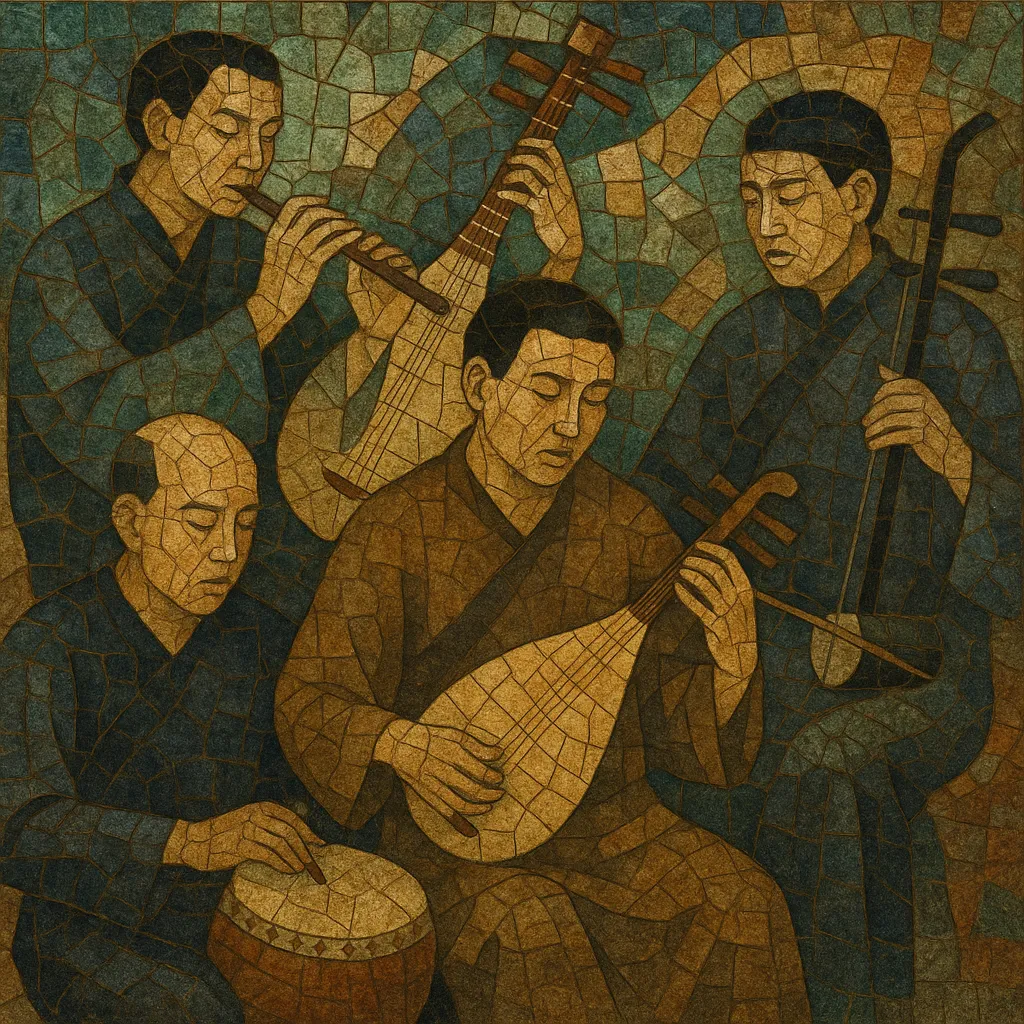
Dongjing (dongjing yinyue) is a Han-Chinese ritual and literati ensemble tradition, most famously preserved among Naxi and Han communities in Yunnan, China. Rooted in Daoist and Confucian ceremonial contexts, it features refined, contemplative instrumental pieces sometimes interwoven with scripture recitation.
The music is typically heterophonic: multiple instruments render the same melody with individual ornamentation, yielding a rich, shimmering texture. Melodic language draws on Chinese modal systems and pentatonic scales, while repertoire is organized around qupai (fixed tune models) elaborated through variation. Performances use gongche notation and emphasize balance, breath, and a ritual atmosphere over virtuosic display.
Dongjing music emerged from the confluence of Daoist liturgical practice and elite Confucian aesthetics, with core repertoire and practices traceable to the Song–Yuan period (960–1368). Migratory and cultural exchanges carried ceremonial music from central and eastern China into the southwest, where it took root in Yunnan. There, scholar-amateur societies adapted temple repertoire into community ensembles, preserving pieces through gongche notation and oral transmission.
From the Ming and Qing eras onward, dongjing flourished in counties such as Lijiang, Jianshui, Tonghai, Weishan, and Dali. Music societies (dongjing hui) organized study, rehearsals, and ceremonial performances. The tradition stabilized as semi-ritual, semi-scholarly music: performed in temples and halls, but equally cultivated by community literati. Ensembles standardized a silk-and-bamboo core—pipa, sanxian, huqin family, dizi/xiao, sheng, guan—with discreet percussion for pacing.
The 20th century brought disruption—particularly during the mid-century political campaigns—when many societies ceased activity. From the 1980s, local custodians and scholars helped revive practice, repair instruments, and re-copy scores. The Lijiang Naxi Ancient Music Ensemble and multiple county associations renewed public concerts, documentation, and teaching. Dongjing has since been recognized within China’s intangible cultural heritage framework and has engaged global audiences through tours and recordings.
Dongjing’s repertory centers on qupai-based suites and meditative pieces whose measured pacing supports ritual and reflective functions. Heterophony is fundamental: each line shades the melody with slides, grace notes, and breathing spaces. The result is a dignified, resonant sound ideal for ceremonies and quiet listening, sustaining a living link to older Chinese courtly and temple sound worlds.

